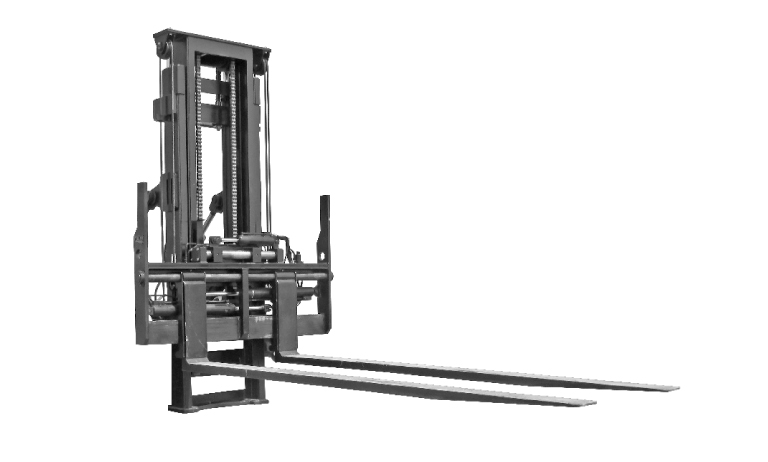Parts of forklift mastWhat is a mast on a forklift? How to select the right mast of a forklift?Reading time: 05 min 57 sec. Table of Contents1. Summary2. What is a forklift mast? 3. Parts of forklift mast 4. How to select the right mast of a forklift? 5. Choose Lift Parts Warehouse to buy Forklift Parts 6. Takeaways SummaryMany forklift masts are available for sale, depending on what you need your fork truck to do and how heavy the loads will be. When choosing a mast of a forklift, consider which option best suits your needs, whether it's fixed height or adjustable fork positioning. A good tip is to make sure the forklift fork carrier can support at least three times more weight than your heaviest load to ensure the safety of both equipment and the people around it! What is a mast on a forklift?A forklift fork carrier - called the mast, is the part of the forklift that holds all fork-carrying componentry to get material from one place to another. The forklift's mast may be fixed or adjustable in height. The upper end may also hold attachments like scoops, hooks, or other forks for various styles of work.
 Parts of forklift mastThe upper end of the fork truck carrier has several working parts, which are important when using your forklift properly. These include:
The fork positioner holds the fork horizontally in place while the forklift operates. The fork positioner may be fixed or adjustable, allowing you to set up your forks for different sizes of loads. Generally, forklift trucks are fitted with load-holding fork attachments known as forks. These vary according to the type of material being handled and task requirements. Forks can be found in numerous shapes and sizes, depending on their usage. Some common forklift mast types include: Teardrop Fork – It is ideal for general-purpose lifting; easy cartons, drums, appliances, etc. Flat Fork – Used mainly with boxed goods that require efficient stacking ability at high levels. Bull Fork – Stronger forklift mast types are required for forklift trucks that require the ability to pick up heavier loads. A bull fork can hold more weight and have a wider fork plane for keeping objects in place as they come off the fork truck. These fork types often have a custom design specific to each piece of material it will carry, such as size and shape. The mast of a forklift may also include attachments that make lifting transporting goods easier. Some common attachments include: Scissor Lifts – Used as an easy way of gaining access into high-level storage areas or vehicles with ease without necessarily using a full-sized forklift truck. Hooks – Designed to hold objects on forklift forks securely. Scoop/Dipper – Used for transporting materials across the forklift for plane safely, without the concern of material falling off or being damaged. If you are using more than one type of fork carrier fork attachment with your forklift truck, consider whether they can be interchanged depending on the task at hand. The fork positioner may also have an elevation feature which is great for making sure you are using your forklift fork carriers to their full potential. How to select the right mast of a forklift?The mast of a forklift is an essential part of the forklift. It is crucial to have a forklift with high lift capacity and a low approach angle for easy storage in small warehouses or loading docks. The mast of a forklift should be dimensioned based on your fork dimensions, forks' weight distribution, and where you want them to pick up/put down their load. To select the right mast of a forklift, three aspects need to consider approach angle, lift capacity, and reach height. Approach AngleThe approach angle of the mast of a forklift has a big impact on how much room there will be between the fork attachments point (top of forks) and floor level when picking up /putting down the loads using fork pockets. The forklift mast's approach angle can be adjusted with fork pockets in the fork attachment point of the mast, allowing you to compensate for fork size and forks' weight distribution. We recommend using fork pockets on both fork attachment points for safety purposes. For custom fork attachments without fork pockets, our forklift masts are also adjustable over 50mm either way by moving the fork adapter down or up along the mast. Please make sure that your forklift can lift the load even when fully extended at maximum reach height, though. If it cannot do so, move your forks further away from each other instead of adjusting the length of the mast - this will create a wider stand-up distance increases stability while lifting loads up and down. Mount fork pockets on both fork attachment points for safety reasons - forklift masts that only have fork pockets at one end might break or bend under heavy load. Fork pockets also protect the mast during transport and when forklift pallets are attached to the mast without forks.
Lift capacity and weight distributionForklift masts come in different sizes and options to fit your needs regarding lift capacity and weight distribution of your forklift forks. The forklift mast height above ground is not a good weight distribution indicator, but you should always measure this directly instead. Our guide below will help you find the right size according to your fork geometry, whether for fork pockets or fork adapters on the mast of a forklift.
Forklift mast height above groundThis is a critical specification for your forklift mast; it determines how high you can reach up and down while forklifting with fork attachments on the mast of a forklift. Our masts are built to a minimum stand-up distance of 500mm - this is measured from the tip of the forks to where they attach onto the mast of a forklift, so there will always be enough room for forklifts to drive in between two stands. If space allows it, we recommend using even higher minimum stand-up distances than 500mm, though.
Choose Lift Parts Warehouse to buy Forklift PartsOur forklift parts online catalog is updated daily, and we typically have more than 30,000 parts in stock to support all of your replacement parts needs. Lift Parts Warehouse has been serving North America since 1995 as a quality supplier of new and used forklift parts for sale, including working with OEMs such as: Takeaways
If you have any questions about our forklift masts, please contact us! |

First Order Special
GET 5% OFF
On Your First Purchase!
Use this discount code
5PERCENTOFF
note: One redemption per account/IP address only

